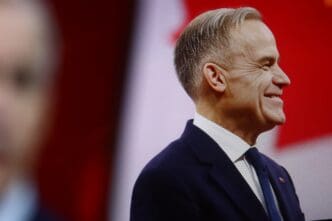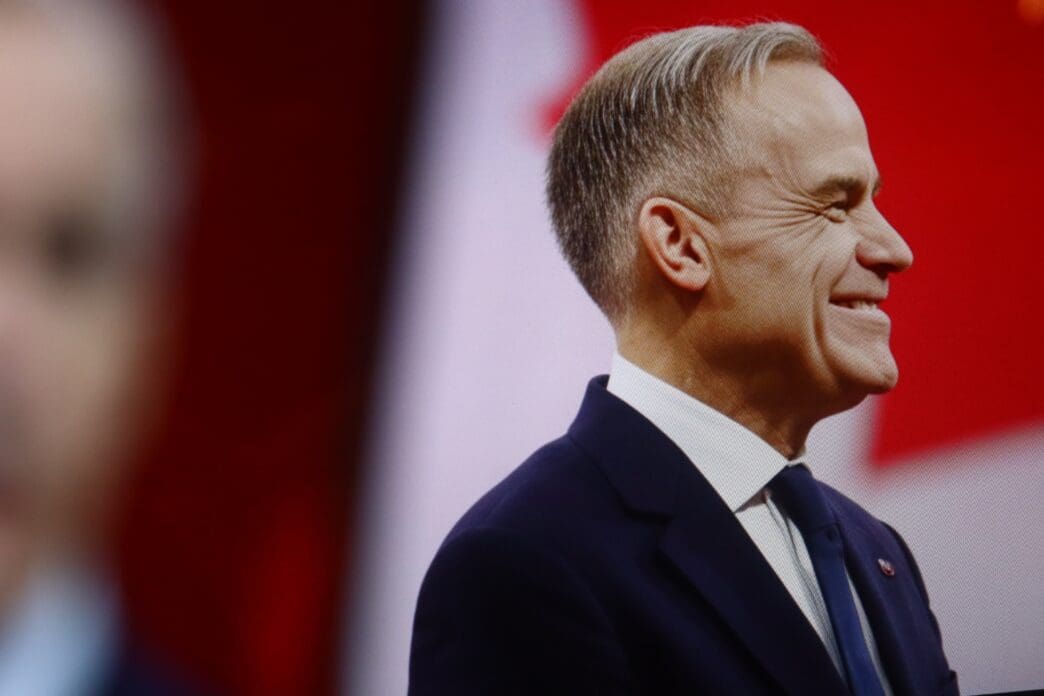Executive Summary
- Prime Minister Mark Carney’s visit to President Trump aimed to de-escalate trade tensions and secure tariff relief but concluded without concrete breakthroughs, receiving only ambiguous assurances.
- Carney adopted a conciliatory approach, including symbolic gestures and maintaining direct communication with Trump, to lower bilateral tensions and find common ground.
- Despite efforts, the meeting was largely dominated by President Trump, and underlying trade disputes, annexation jokes, and strained relations between the two nations persisted.
The Story So Far
- Prime Minister Carney’s visit to President Trump was primarily aimed at securing relief from steep US tariffs on Canadian goods, which have significantly impacted Canada’s economy and political landscape, making it the sole G7 nation without a trade deal to circumvent these duties. This diplomatic effort reflects Carney’s strategic shift towards a more conciliatory approach compared to his predecessor, seeking to de-escalate tensions and maintain direct communication with President Trump, all against a backdrop of significantly strained bilateral relations since President Trump’s return to the White House.
Why This Matters
- Despite Prime Minister Carney’s conciliatory approach and efforts to de-escalate tensions, his meeting with President Trump yielded no immediate relief from US tariffs on Canadian goods, indicating continued economic pressure on Canada. This strategic shift in Canadian diplomacy, aimed at maintaining open communication amidst strained bilateral relations, suggests a long-term strategy for managing ongoing trade disputes and underlying geopolitical friction rather than anticipating quick resolutions.
Who Thinks What?
- Prime Minister Carney aims to de-escalate trade tensions and secure relief from US tariffs through a conciliatory approach, maintaining direct communication with President Trump and making symbolic gestures, despite the lack of concrete breakthroughs.
- President Trump maintains steep US tariffs on Canadian goods, offers vague assurances about future outcomes, expresses ambivalence about existing multi-country trade agreements, and largely dominates bilateral discussions with a jocular yet firm stance.
Canadian Prime Minister Mark Carney visited Washington on Tuesday to meet with President Donald Trump, aiming to de-escalate trade tensions and secure relief from steep US tariffs on Canadian goods. Despite Carney’s efforts to project camaraderie, including wearing a red tie and laughing off President Trump’s jokes about annexing Canada, the meeting concluded with ambiguous assurances from President Trump and no concrete breakthroughs on trade.
Efforts to Mend Relations
Prime Minister Carney actively sought to align with President Trump, notably by wearing a red tie, a color often associated with the Republican party. He explained the gesture to President Trump, who, in contrast, wore a blue tie. This symbolic effort underscored Carney’s broader strategy to find common ground after months of trade disputes.
Expectations for the visit were low, particularly regarding any immediate easing of tariffs on Canadian steel, aluminum, automobiles, and lumber. However, President Trump offered a vague promise that Carney and his delegation would “walk away happy,” without elaborating on the specifics of this assurance.
Navigating Trade Tensions
Canada remains the sole member of the Group of 7 nations yet to secure a trade deal to circumvent punitive US duties, which are significantly impacting Canada’s economy and Prime Minister Carney’s political standing. President Trump suggested that the Canadian people would “love us again,” acknowledging the current strain in relations.
Since taking office, Carney has adopted a more conciliatory approach than his predecessor, Justin Trudeau, who had openly criticized Trump’s tariffs. Carney has maintained direct communication with President Trump through text messages and has largely avoided public confrontations, aiming to lower the temperature of bilateral discussions.
Annexation Jokes and Deteriorating Ties
The sensitive topic of potential US territorial aspirations resurfaced during the meeting. Carney had previously asserted to President Trump that Canada is “not for sale.” On Tuesday, President Trump jokingly interjected “The merger of Canada and the United States?” as Carney praised his foreign policy achievements, to which Carney responded with a grinning “No!”
This exchange highlighted the underlying tension in a relationship that has seen significant deterioration since Trump returned to the White House. Canadian tourism to the United States has declined, and some Canadian stores have removed American products from their shelves, reflecting a growing sense of betrayal among many Canadians.
Meeting Dynamics and Future Outlook
The meeting was largely dominated by President Trump, who spoke extensively on a range of unrelated topics, including a US government shutdown, efforts to improve Washington, D.C., and the war in Ukraine. Prime Minister Carney, known for his efficiency, mostly deferred to President Trump, speaking sparingly.
Carney aligned with President Trump on issues such as fentanyl crossing the border, stating that “any amount is too much,” despite low reported figures. He also remained silent when President Trump expressed ambivalence about the future of the North American trade agreement, suggesting potential bilateral deals instead of the existing multi-country arrangement.
President Trump later characterized Carney as “a nice man but he can be very nasty.” When asked why a deal couldn’t be struck with such a “great man,” President Trump humorously replied, “Because I want to be a great man, too,” before reporters were ushered out.
Key Takeaways
Prime Minister Carney’s visit to Washington yielded no immediate relief from US tariffs, but it signaled a strategic shift towards a more outwardly cordial engagement with President Trump. While significant disagreements persist, Canada appears focused on de-escalation and maintaining open lines of communication, even amidst lingering trade disputes and underlying geopolitical tensions.








